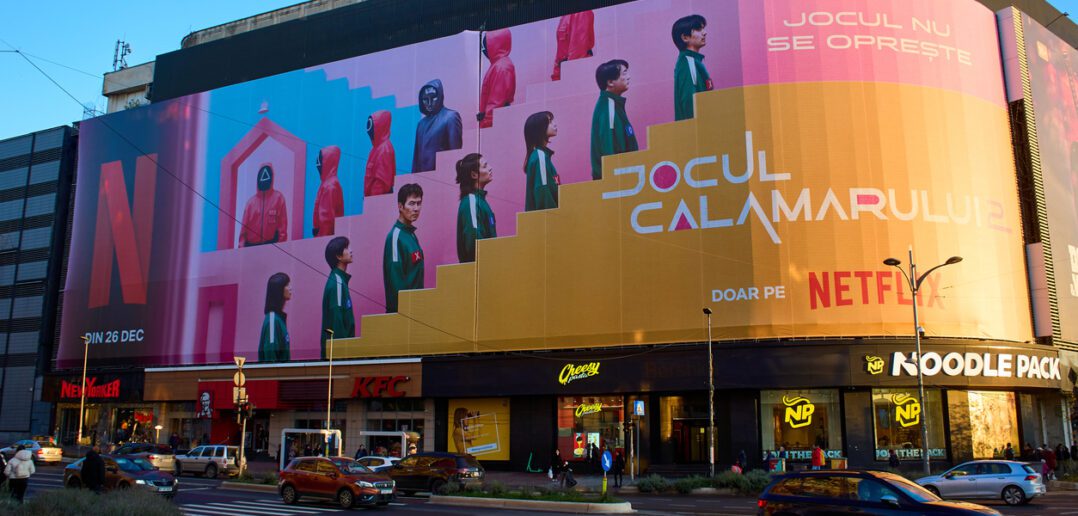When a trend on TikTok can transcend borders in days and Roblox experiences are played concurrently by millions in multiple languages and regions, do we really need content to feel ‘universal’ anymore? What does universal appeal even mean these days?
If you think about it, the IP that are dominating Gen Z and A’s screens worldwide are Squid Game’s brutal Korean playground games, Bluey‘s distinctly Aussie slang, K-pop Demon Hunters’ hit songs featuring Korean lyrics, and Salvador Dali-masked thieves in Spain’s Money Heist.
These weren’t sanitised for global consumption – they’re unapologetically local – yet all are loved around the world. In kids media, the notion of « home grown and globally loved » was well-intentioned, but it often meant an element of removing cultural specifics and rounding off regional edges. Yet today’s fandom suggests that specificity may actually travel better than genericism.
The previous broadcast-led mindset operated on the premise that optimising chances of international sales success required some smoothing out of local quirks. Animated series were often constructed to feel culturally neutral to improve the chances of a sale; it assumed that kids in Buenos Aires, Birmingham and Bangkok would only connect with the content via ‘recognisable’ characters and broad storylines.
Accents too were often Western Neutral or American, the cast of characters relatively generic and locations were created as ‘everywhere worlds’ where landscapes were largely devoid of cultural markers so that they would resonate in as many places as possible. It worked well, that is until access to the world’s content opened up to kids via smartphones and YouTube, and the model of universal appeal struggled to create new meaningful connections. Nowadays, as fandom is fragmenting, the very notion of ‘monoculture’ is disappearing.
Current data tells a new story about what is succeeding internationally. Anime, long-dismissed as too niche for mainstream eyeballs, now drives billion-dollar global franchises like Demon Slayer, One Piece and Blue Lock among kids and teens. The Korean Wave demonstrates how unapologetically Korean content has captured global youth culture – bands like TWICE and BTS perform in Korean and kids from Europe WILL learn the words. Meanwhile, Bluey, the global hit preschool show saturated with Aussie references is one of Disney+’s most-streamed shows globally and a licensing success for BBC Studios. Squid Game – perhaps the most striking example – delivers a gripping tale of dystopian violence through deeply Korean cultural references yet it reached 142 million households worldwide in its first month on Netflix.
There’s a pattern: audiences aren’t merely tolerating cultural specificity – they’re drawn to it. The quirks, textures and authentic details that studios once worried would alienate international audiences are precisely what creates emotional resonance with kids. Young viewers want different, not sanded-down sameness.
There are four forces that facilitated this transformation:
1- Global distribution platforms like Netflix, YouTube, Roblox and TikTok collapsed geographical barriers to fandom. ‘Subbed and dubbed’ is no longer a barrier to enjoyment, in fact many streamers offer auto-dubbing in dozens of languages. Creators often post with captions and audiences seamlessly consume content across linguistic boundaries. Have you seen how many young people prefer to watch content WITH subtitles on these days?
2- Young audiences have become cultural omnivores. Gen Alpha routinely binge anime, watch Brazilian football content on CazéTV on YouTube, and they might discover Icelandic pop via TikTok all in the same day. Their media diet is global by default.
3- Interest-based recommendation algorithms fundamentally changed discovery from « what’s on prime-time TV in my local market? » to « what’s trending globally and matches my interests? »
4- Participatory fandom transforms local culture into a global shared event through memes, giphy, and social engagement that transcends geography.
So, does ‘universal’ still matter?
I would say that some formats still thrive on broad relatability to travel easily: reality shows, sports broadcast and non-dialogue animation like Mr. Bean. Franchises like Paw Patrol succeed by creating generic worlds that support massive merchandise operations. The risk calculation itself still needs to be considered – overly specific localisation might alienate certain markets or limit licensing potential, but getting rid of it altogether presents a different risk.
It also raises a question as to whether ‘distinctive global’ content is more viable in streaming, while ‘universal bets’ might be better for driving toy sales. Both may be true, so calculating the right balance is important.
Can we work out a new equation for global success?
We can safely say that tastes are evolving. New universality isn’t found in bland storytelling but in universal human emotions, even if they are delivered through a specific cultural lens. Audiences don’t need to be Korean to feel empathy for Squid Game characters or be Australian to laugh with Bluey’s family dynamics, and yet audiences still relate, and the local flavour only seems to deepen the connection.
The formula in 2025 might be written thus: Distinctive world-building + Relatable emotions = Travel potential. It isn’t about removing cultural specifics, on the contrary younger demos are curious about them. It’s about leveraging authenticity.
For creators, this means resisting pressure to change from your core flavour, and for buyers it requires taking risks on the surprising rather than defaulting to what feels ‘most broad’. Successful IP CAN feature the unfamiliar and the familiar at the same time. Localise, don’t generalise and we can embrace the fact that young audiences have more varied content palettes than ever before!




